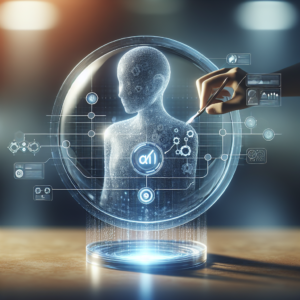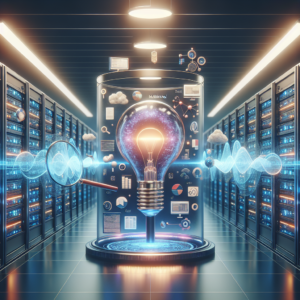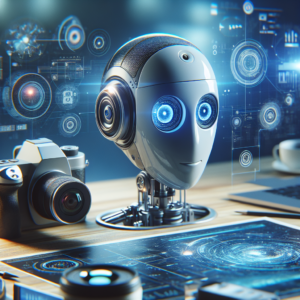Have you ever thought about how much technology has evolved over the years? It’s incredible to see how machine learning (ML) has shaped the world I live in today. The advancements in this field are not just fascinating; they’re transforming sectors like healthcare, finance, and transportation. In this article, I’ll share insights into the profound impact of ML on modern technology, breaking down its definitions, applications, and future possibilities.
Understanding Machine Learning
Machine Learning refers to a subset of artificial intelligence (AI) that enables systems to learn from data, improve their performance over time, and make decisions without being explicitly programmed. I find it amazing how ML algorithms analyze vast amounts of data, identify patterns, and gain insights that would be impossible for a human to process alone.
The Basics of Machine Learning
At its core, machine learning relies on data. I often think of it like teaching a child to recognize objects. Initially, a child may not understand what a dog or a cat is, but by observing various examples and receiving guidance, they begin to identify different animals. Similarly, ML algorithms require training data to discern patterns and make predictions.
The three main types of machine learning are:
-
Supervised Learning: In this approach, algorithms learn from labeled datasets, which helps them understand the relationship between input and output data. For instance, if I wanted to create a model that predicts house prices based on features like size and location, I would start with a dataset where the prices are already categorized.
-
Unsupervised Learning: Here, algorithms examine data without pre-existing labels. This method helps uncover hidden structures. A good example of this is clustering, where I might want to analyze customer behavior and segment them into distinct groups based on their purchasing patterns.
-
Reinforcement Learning: This type involves algorithms learning through a system of rewards and penalties. I find this particularly interesting when thinking about training robots or self-driving cars, where the algorithm continuously adjusts its actions to achieve the best outcome.
Applications of Machine Learning in Modern Technology
The influence of machine learning can be seen across various industries. My encounters with these applications have ranged from everyday conveniences to revolutionary changes in business practices and societal norms.
Healthcare
In healthcare, machine learning has revolutionized diagnostics and patient care. Hospitals utilize ML algorithms to predict patient outcomes, helping doctors make informed decisions. I recently read about how early detection of diseases like cancer greatly improves survival rates. Algorithms analyzing medical images can sometimes perform as well as, or better than, human radiologists.
Here’s a brief overview of how ML is helping healthcare:
| Application | Description |
|---|---|
| Disease Diagnosis | Algorithms analyze medical images for accuracy. |
| Predictive Analytics | Predicts patient outcomes based on historical data. |
| Personalized Medicine | Customizes treatment plans based on individual patient data. |
These advancements are not only improving the efficiency of healthcare but also enhancing the accuracy of diagnoses and treatments.
Finance
In the finance sector, machine learning is significantly impacting risk assessment and fraud detection. Banks employ ML algorithms to analyze transaction patterns and pinpoint activities that deviate from the norm. For instance, if I’m using my credit card and my spending suddenly spikes in an unusual location, the bank’s ML system might flag that as potential fraud and prompt a security alert.
Like healthcare, here’s how ML plays a role in finance:
| Application | Description |
|---|---|
| Credit Scoring | ML models assess creditworthiness based on various factors. |
| Fraud Detection | Analyzes transactions in real-time for suspicious activities. |
| Algorithmic Trading | Utilizes historical data to inform trading decisions. |
These tools are incredibly effective in mitigating risks and enhancing the overall security of financial transactions.
Transportation
Transportation is another sector where machine learning is making waves. I can’t help but be impressed by how ML powers navigation apps that help us avoid traffic and reach our destinations faster. These applications use real-time data to adjust routes based on traffic conditions.
Let’s take a look at some key transportation applications:
| Application | Description |
|---|---|
| Autonomous Vehicles | Algorithms process data from sensors for real-time decision making. |
| Traffic Management | Analyzes patterns to optimize traffic signals and reduce congestion. |
| Ride-Sharing Services | Uses ML to match drivers and passengers efficiently. |
The capabilities of ML are transforming how we think about and use transportation.
Retail
In the retail industry, machine learning has shifted the way businesses understand consumer behavior. I often notice how platforms like Amazon recommend products based on my previous purchases and browsing history. This personalized shopping experience is largely thanks to advanced ML algorithms.
Here’s a look at how machine learning is utilized in retail:
| Application | Description |
|---|---|
| Recommendation Engines | Suggests products based on user behavior and preferences. |
| Inventory Management | Predicts stock needs based on trends and seasonal demands. |
| Customer Sentiment Analysis | Analyzes reviews and feedback to gauge customer satisfaction. |
These innovations help retailers create tailored experiences for customers, fostering brand loyalty.
Manufacturing
The manufacturing industry uses machine learning to optimize production processes and enhance product quality. I find it fascinating how factories can reduce downtime and improve efficiency by predicting when machines will need maintenance before they break down.
The key applications in manufacturing include:
| Application | Description |
|---|---|
| Predictive Maintenance | Anticipates equipment failures to schedule timely repairs. |
| Quality Control | Monitors production processes to maintain quality standards. |
| Supply Chain Optimization | Analyzes demand forecasts to streamline inventory management. |
These advancements not only save money but also improve overall productivity in manufacturing.
The Future of Machine Learning
The future of machine learning is bright and holds immense potential. I can’t help but wonder about the possibilities that lie ahead as technology continues to evolve. In the next few years, I believe we’ll see further integration of ML in our daily lives.
Ethical Considerations
As machine learning becomes more ubiquitous, I recognize the need for ethical considerations regarding data privacy and security. With algorithms processing vast amounts of personal data, maintaining user privacy will be paramount. Developers and organizations will need to prioritize transparency and accountability to foster trust among users.
Advancements in Natural Language Processing
Natural Language Processing (NLP) is an area of machine learning that interests me the most. It’s fascinating how ML can now understand, interpret, and generate human language. This technology has paved the way for applications like chatbots and virtual assistants. As ML techniques advance, I anticipate even more sophisticated interactions, enhancing customer service experiences across various sectors.
Enhancing Human-Machine Collaboration
In the future, I foresee a surge in human-machine collaboration. As machines take over repetitive tasks, I envision more emphasis being placed on creativity and empathetic roles for humans. The synergy between human intelligence and machine learning could lead to unparalleled innovations in fields ranging from arts to science.
Expanding into New Industries
While machine learning is making waves in established sectors, I believe it will expand into emerging industries as well. For instance, agriculture could benefit from predictive models that optimize planting and harvesting schedules. Additionally, environmental monitoring through ML could help address climate change challenges by enhancing resource conservation efforts and predicting natural disasters.
Conclusion
It’s evident to me that machine learning is not just a buzzword; it’s a transformative force that is reshaping our world. From healthcare to finance and beyond, the implications of ML are vast and varied. As a technologist and a user of these emerging technologies, I feel both excitement and responsibility to ensure that these innovations serve humanity positively and ethically.
The developments in machine learning present an opportunity for all of us to embrace a future where technology enhances our daily lives. As I ponder the impact of ML, I’m motivated to stay informed about this rapidly evolving field and consider how I can contribute to shaping a better tomorrow for everyone.






